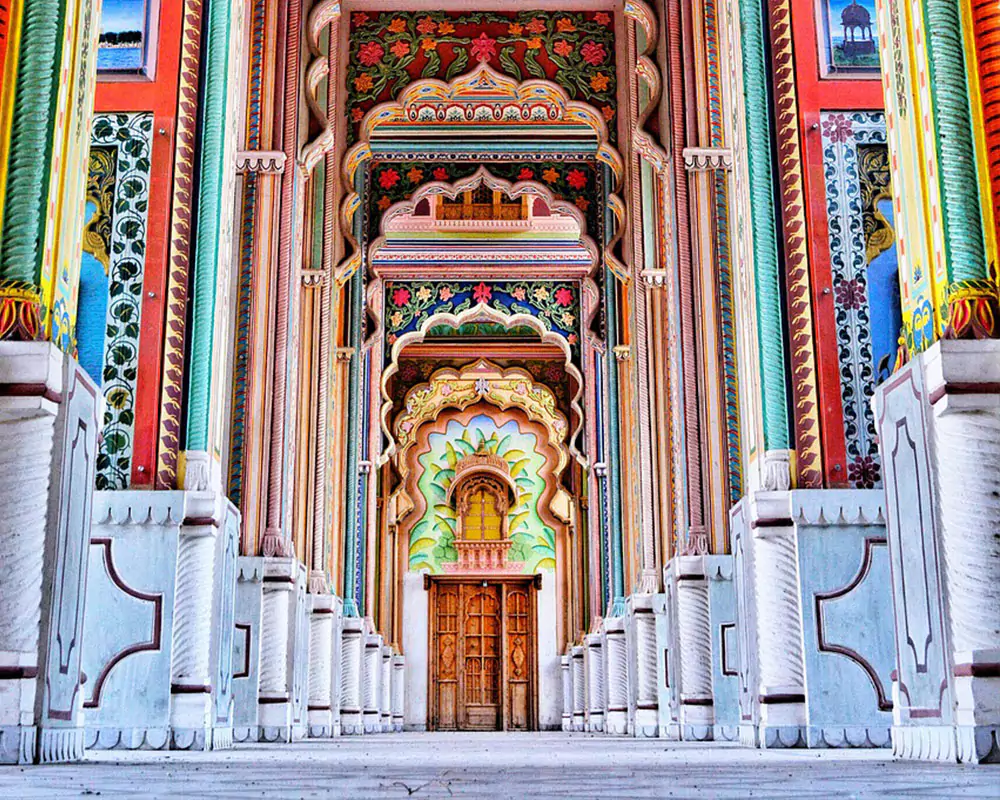About Rajasthan
Rajasthan, India's largest state by area, is a land of vibrant culture, rich history, and breathtaking landscapes.
History
1 Ancient Period- The region has a history dating back to the Indus Valley Civilization, with archaeological findings suggesting early settlements.
2 Medieval Period- Rajasthan saw the rise of various Rajput kingdoms like Mewar, Marwar, Amber, and others.
3 Mughal Rule- During the Mughal era, Rajasthan witnessed both alliances and conflicts with the Mughals. Some Rajput rulers aligned with the Mughals, while others resisted Mughal authority.
Geography of Rajasthan
1 Rajasthan is characterized by its vast desert landscapes, including the Thar Desert, also known as the Great Indian Desert.
2 Culture- Rajasthan is renowned for its vibrant culture, which is reflected in its folk music, dance, art, and festivals. The state’s cuisine, clothing, and architecture also showcase its rich heritage.
Rajasthan Festivals
Pushkar Camel Fair
This world-famous festival takes place annually in the town of Pushkar. It is one of the largest camel fairs in the world and attracts thousands of tourists and traders.
Diwali
Diwali, the Hindu festival of lights, is celebrated with great fervor throughout Rajasthan. Homes and streets are adorned with oil lamps, candles, and colorful decorations. People exchange gifts, sweets, and greetings, and fireworks light up the night sky.
Gangaur
Dedicated to Goddess Parvati, Gangaur is one of Rajasthan's most important festivals, especially for women. It is celebrated with much enthusiasm and devotion by married women for the well-being and longevity of their husbands.
Teej
Teej is a monsoon festival celebrated primarily by women to honor the goddess Parvati and seek her blessings for marital bliss and well-being. Women dress in green traditional attire, sing folk songs, and participate in swings adorned with flowers.
Mewar Festival
Held in Udaipur, the Mewar Festival celebrates the arrival of spring and showcases the vibrant culture of the region. The festival includes traditional folk performances, processions, cultural programs, and a colorful boat procession on Lake Pichola.
Rajasthan Foods
Rajasthani cuisine is known for its rich flavors, spicy dishes, and extensive use of dairy products.
1 Dal Baati Churma- This is perhaps the most famous dish of Rajasthan. Baati is a baked dough ball made from whole wheat flour, typically served with dal (lentil curry) and churma, a sweet dish made from coarsely ground wheat flour, ghee, and sugar.
2 Laal Maas- Translating to “Red Meat,” this spicy meat curry is a signature dish of Rajasthan. It is traditionally made with mutton cooked in a fiery red chili paste, yogurt, and a blend of aromatic spices.
3 Gatte ki Sabzi- Gatte are gram flour (besan) dumplings that are boiled and then cooked in a yogurt-based gravy with spices.
4 Ker Sangri- This traditional Rajasthani dish is made from dried berries (ker) and beans (sangri) native to the arid regions of Rajasthan.
5 Rajasthani Thali- A typical Rajasthani thali (platter) is a feast for the senses, featuring an array of dishes like dal, bati, churma, gatte ki sabzi, ker sangri, papad, various types of chutneys, pickles, and sweets like malpua, ghewar, or mohanthal. It offers a comprehensive sampling of Rajasthan’s diverse culinary delights.

Rajasthan Traditions
Rajasthan is a land of rich traditions and cultural heritage, deeply rooted in its history and way of life.
1 Ghoomar Dance- Ghoomar is a traditional folk dance of Rajasthan performed by women during special occasions and festivals. It involves graceful movements, twirling in circular motions, and synchronized footwork to the rhythm of folk songs.
2 Turban (Pagri) Tying- Turbans hold immense cultural significance in Rajasthan and are worn by men as a symbol of pride, honor, and identity.
3 Camel Safari- In the desert regions of Rajasthan, particularly Jaisalmer and Bikaner, camel safaris are a popular tradition for exploring the vast expanse of the Thar Desert.
4 Folk Music and Instruments- Rajasthan has a rich tradition of folk music, with various traditional instruments like the dholak, sarangi, kamayacha, and morchang accompanying soulful folk songs.
5 Rajasthani Attire- Traditional Rajasthani attire is known for its vibrant colors, intricate embroidery, and mirror work.
6 Mehendi (Henna) Art- Mehendi holds cultural significance in Rajasthan and is an essential part of weddings and festivals.
7 Rajput Valor and Chivalry- The Rajputs, the warrior clan of Rajasthan, have a long history of valor, courage, and chivalry.
RajasthanTourist Places
Certainly! Rajasthan is a treasure trove of stunning tourist destinations that showcase the rich cultural heritage, architectural marvels, and natural beauty of the region.
1 Jaipur Known as the “Pink City,” Jaipur is the capital of Rajasthan and a UNESCO World Heritage Site. Its iconic landmarks include- 1 Amber Fort City Palace, 2 Hawa Mahal (Palace of Winds), 3 Jantar Mantar (Observatory), 4 Nahargarh Fort, 5 Jaigarh Fort.
2 Udaipur Often referred to as the “City of Lakes” or the “Venice of the East,” Udaipur is famed for its romantic ambiance and picturesque settings. Key attractions include- 1 City Palace, 2 Lake Pichola, 3 Jag Mandir, 4 Jagdish Temple, 5 Saheliyon ki Bari (Garden of the Maidens).
3 Jodhpur Known as the “Blue City” due to the blue-painted houses in its old quarter, Jodhpur is dominated by the imposing Mehrangarh Fort. Other notable sites include-1 Mehrangarh Fort, 2 Jaswant Thada, 3 Umaid Bhawan Palace, 4 Ghanta Ghar (Clock Tower), 5 Mandore Gardens.
4 Jaisalmer This golden-hued city rises from the sands of the Thar Desert, boasting splendid forts and havelis. Key attractions include- 1 Jaisalmer Fort (Sonar Qila), 2 Patwon ki Haveli, 3 Nathmal ki Haveli, 4 Gadisar Lake, 5 Sam Sand Dunes.
5 Pushkar A sacred town for Hindus, Pushkar is famous for its Brahma Temple and the annual Pushkar Camel Fair. Other attractions include- 1 Pushkar Lake, 2 Savitri Temple, 3 Rangji Temple, 4 Brahma’s Temple, 5 Pushkar Camel Fair (held annually).
6 Ranthambore National Park- One of the largest national parks in India, Ranthambore is renowned for its tiger population and diverse wildlife. It offers thrilling wildlife safaris amidst the ruins of Ranthambore Fort.








